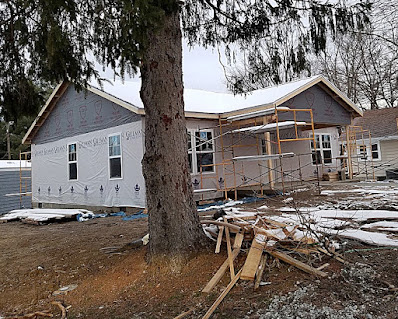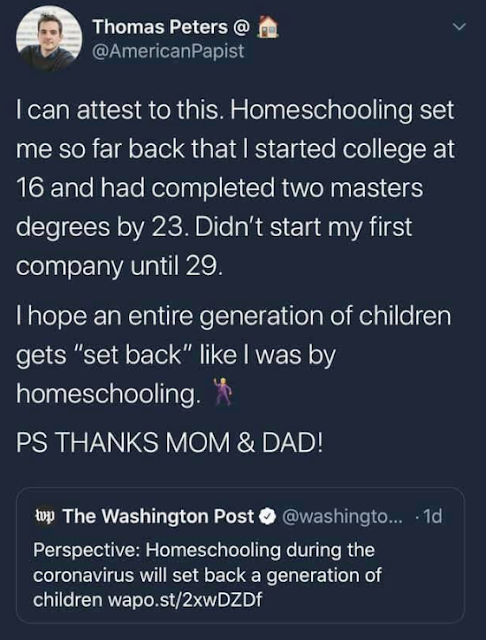Has the 2020 Pandemic Changed your Living Situation?
When you work from home as a social media marketing consultant for small business and an online social media influencer, AND homeschool your kids, you can literally work from anywhere. A few years ago, we took advantage of that and bought a cottage in the middle of nowhere on a little lake. If I knew then, what I know now, I would've held out for more money when I sold it in 2020. Even so, for owning it just over two years, I made a little money on the deal. So, what's up with the housing situation anyway?
This post contains Amazon affiliate links for your convenience.
Lake house, fixer upper, mid fix stage.
In 2019 the kids decided they wanted to attend public school to pursue building trades and band. As a anxious homeschooling mom, I wanted to feel comfortable with this choice, so we moved back to my hometown and we rented. Lucky for me, it wasn't real renting. My brother had purchased a rental and we moved in while I looked for a more permanent place to call home. Since everyone was out of the house, I decided to go back to working in a brick and mortar environment too and I took a job for Habitat for Humanity.
Then, I looked and I looked, and I looked. Rentals were few and far between and most of them were either outside of my price range or beneath my standards. Let me tell you, I had pretty low expectations, but I wanted my kids to feel safe. I tried to purchase my own home, but every time a place went on the market it sold before I even got a chance to look at it. What was left were the homes that no one wanted. The homes that couldn't get loans due to major issues or the homes that were priced well over their appraised value. Though, I considered making the leap and purchasing one of these houses, I held out for a home that wasn't a fixer upper.
However, the home we bought, would've sold for considerably less in 2019, before the pandemic. In fact, the flipper had purchased the house at a 2017 auction for only $25,000. After looking at several houses that were priced outside of my comfort zone and not really what I wanted, I jumped on the opportunity to buy my home at $131,900. Sure, in most communities, that's a great price, but in my hometown the median home price is $85,000 and the houses in the neighborhood were going for considerably less. I needed to love this house for the purchase to make any sense. It was a risky move, will it retain it's value?
However, despite the housing market situation, I decided to take a risk and make an offer below asking price. The homeowner countered, and I accepted. It was oddly easy, as most houses were selling over the asking price and this house had everything I wanted. Just before I closed, I found out that the house had been the place of a brutal murder. Probably should've countered the counter offer. I was the only one bidding. I'm not mad. I'm thankful to finally have an affordable, safe place to call home.
After the pandemic, the prices of homes in rural areas like New Castle, Indiana have skyrocketed. For those who are looking for 3+ bedrooms and 2 bathrooms, there's a housing shortage. Since Covid hit, more people are realizing they too can work from home. And they can live anywhere. So, they're abandoning high cost urban areas and retreating to rural communities where the cost of living is easier on the wallet and life is simpler. This means, rural areas can raise home prices and because rentals are in high demand with millennials, they can also raise the rent, pricing out low-income families. In turn, many affluent urban areas are actually seeing a decrease in rent as people flock to small towns. You can learn more about that in this article on how 2020 changed the housing market.
After reviewing the article, I took special note of what this is doing to low income families. Working at Habitat for Humanity, it is my job to help low income families find affordable housing and help remove some of the barriers to home ownership. With increasing cost of building materials and virus constraints, many area Habitat affiliates have had to put building new homes on the back burner. Families have had to wait for over two years for their homes to be completed, and Habitat affiliates are losing money and need to raise more funds just to complete the houses.
The chart below lists several counties neighboring the one where I live. If you aren't from around here, the data may not tell the whole story. However, Hamilton and Hendricks counties have some of Indiana's most affluent neighborhoods. Marion county is the home to Indianapolis, which has seen a slight increase, but compared to cities like Chicago and New York, Indianapolis is an escape to a more rural life. It appears the Coronavirus has changed the housing market. More and more people are realizing they can work from home, and that means that home can be anywhere they want it to be. There truly is no place like home, so why live in a house in a place that you don't love?
Affordable rentals in New Castle, Indiana.
We want to hear your thoughts! Have you moved or considered purchasing a new home in the pandemic? Tell us about it in the comments.
| 2/1/2021 | Delaware County | Indiana | $600 | 3.30% | $45,065 | 114,135 | Small metro |
| 2/1/2021 | Hancock County | Indiana | $790 | 9.00% | $69,392 | 78,168 | Large fringe metro |
| 2/1/2021 | Hamilton County | Indiana | $1,116 | -0.90% | $105,062 | 338,011 | Large fringe metro |
|
| 2/1/2021 | Madison County | Indiana | $792 | 20.20% | $55,142 | 129,569 | Large fringe metro |
This chart from Zumper tells the story with data.



























